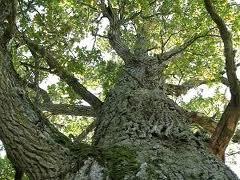
Humans have caused habitat loss and fragmentation across the globe. Species have become threatened by the decline and isolation of their environments. Specifically in Östergötland, Sweden, an affected habitat is woodland containing oaks. This valuable environment has declined due to abandoned management and changes in land use. Along with oaks being cut down, open, sunny woodland habitats have been transformed into shady, overgrown habitats less suitable for oak-associated species dependent on light. A light-dependent species associated with this habitat is Synanthedon vespiformis. The primary host of the larvae is Quercus rober (oak). This moth is classified as vulnerable on the Swedish Red List. To conserve threatened species, knowledge of what habitat the species uses and how much is essential. What habitat a species used can be found by relating habitat elements to species abundances. How much habitat is preferred can be found by relating the species to habitat elements at multiple scales. Once you know what habitat and how much, one can assess areas in the landscape suitable for a species.
Aims:
Investigate response of S. vespiformis to various habitat elements at multiple scales
Determine the scale(s) that best explains the abundance of S. vespiformis
Create prediction maps based on habitat preferences
Responsible for this page:
Director of undergraduate studies Biology
Last updated:
05/24/13
